Organisation Of Figure Elements Assignment Help
Spatial basis for grouping
Attraction has an effect not only on what we look at in a pattern first, but also on the way we organize the pattern. We shall make our discussion as simple as we can by speaking as if the forces of attraction were actually in the design itself. Here they have the effect of seeming to charge various parts of the pattern with different degrees of dynamic tension.
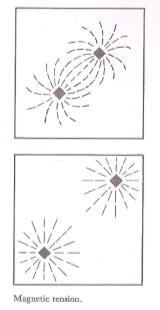
A comparison with a magnetic field is helpful in visualizing this sort of thing. The diagram shows how the lines of force arrange themselves. The lines might represent iron fillings spread on a sheet of paper and held over the poles of a horseshoe magnet. If the distance between the poles is increased, there will be a point at which the tension breaks. The fillings will then radiate symmetrically from each pole. Something very similar happens in the visual field. Put two square spots on a ground. Each has a certain strength of attraction from the contrast it makes with the ground. If the squares are close enough together, the resulting tensions in the field will tie the two spots together like the lines of magnetic tension. We will perceive one figure made up of two square elements. We call this effect of attraction on the field its spatial tension. Now we move the squares farther apart. We will reach a point at which the two squares no longer organize together as a single complex figure spot. They will be seen as two completely separate figure elements.
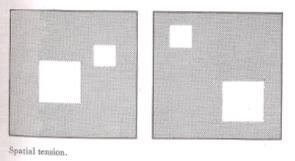
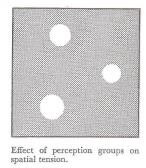
Spatial tension is reinforced in this respect by another psychological characteristic of our perceptions. Our minds are so constituted that we always try to group elements into larger units. The familiar constellations that men have found in the night sky are an illustration of this process. This peculiarity has a definite bearing on spatial tension. Wherever the larger pattern, made by individual units separated in space, is a good pattern, the cohesion of spatial tension is reinforced. In the diagram, the three circles are separated by intervals that, by themselves, would break the intrinsic spatial tension. But because they are arranged in the easily perceived form of a triangle, we still unite them into a single perception group.
Where spatial tension is unassisted by an easily perceived larger grouping, it is directly proportional to the attraction of the elements. With strong attractions, quite an interval of space can be used and the spots will still group together; with weak attractions, the interval must be considerably smaller. This spatial tension, growing out of attraction and our tendency to see individual units in a patterned group, gives us one of the factors that determine what sort of form we perceive in a given field. It is an important resource in composing.
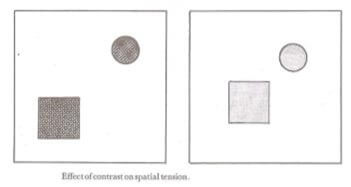
There are other basic devices for achieving figure grouping that also deal with spatial relations. Consider our magnet again. You have probably played with one at some time or other. You know how firmly a nail or bar is held in place if laid across the poles. A closed and stable circuit is formed. The same kind of thing happens in the visual field. If two figure elements touch each other, they form a tight group of one composite figure. A number of basic possibilities are shown below.
There is one important qualification to grouping by overlapping. Where a physically flat pattern has the illusion of depth, overlapping shapes may be separated in depth. In fact, overlapping is one of the basic indications of space. Although overlap may be used to create a sense of depth, it also produces a surface figure grouping. This is an important consideration in pictorial composition.
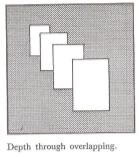
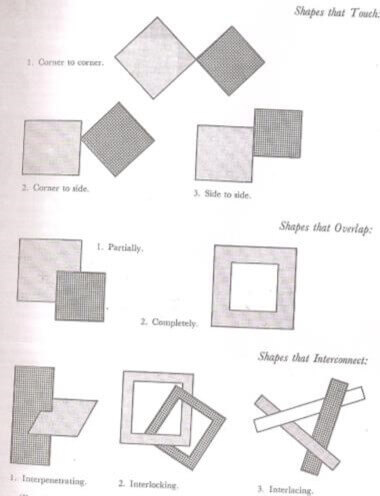
Likeness basis for grouping
The second organizing factor that is responsible for the kind of form we see in a pattern is likeness. Whenever we can find a resemblance between things, we feel a relationship between them. Like spatial tension, such likeness also acts as a basis for grouping things in perception. This is a second basic tool in composing.
Organisation Of Figure Elements Assignment Help By Online Tutoring and Guided Sessions from AssignmentHelp.Net
Perceiving likeness involves more than attraction. Attraction is largely a quantitative proposition. Likeness is qualitative. Here is where attention value and meaning come back into the picture.
This is a good place to consider how we find meaning in a visual pattern. It is simple to see when a shape in nature means a tree or a man. It is still simple when a representation on paper is made of those forms. So it is the use of shapes as symbols. Too often this is the only meaning people get out of visual arts. It is not the only kind there. It is not the only kind they respond to, even though they may be unaware of the fact.
Perhaps it seems simple-minded to say that a blue square means a blue square before it can have any other kind of meaning. Actually, this is meaning of the most fundamental sort. Everything else is added on through experience. The qualities that are perceived as blueness and squareness are given in the stimulus itself. In our ordinary daily business, we have to be more concerned with the sort of meaning things take on through experience. The roundness and colour of an orange mean something good to eat. We pass over the actual perception of its visual nature for the perception of its use to us. So we get into a habit of treating most of our perceptions as shorthand symbols. A particular pattern in the visual field means chair. We sit on it without ever seeing its particular shape, size, colour or visual texture. This works in most of our daily living. It does not work in designing or appreciating designs. There we must register the actual qualities themselves. The intrinsic meanings are just as important as those we add on from our reservoir of experience.
They are the basis of our perception of likeness. Two spots of red in a pattern, or two similar shapes, are tied together by similar meanings. We see a relationship, and this relationship affects the kind of form in which the figure organizes.
Any one or a combination of the different qualities we perceive in the visual field can serve as the basis for likeness. We can outline the possibilities as shown in the figures below:
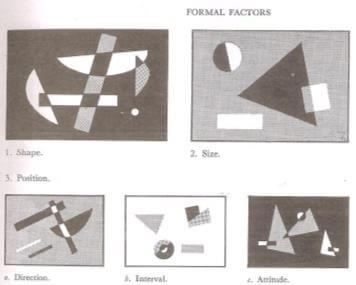

Dynamics in the field
The relative strength of attraction and attention value which a form possesses is an important factor in its dynamic value. Attraction and attention value depend on several elements within the form.
Degree of tonal contrast: This may be expressed in any one of the tonal dimensions, for example, value or hue or intensity. More likely, it will involve a combination of dimensions.

Degree of visual texture contrast: This is usually closely related to tone. Sometimes you may have visual contrast with unity of tone. This is often used for instance, in working with fabrics. A blue velvet, say, can accent a blue satin by its contrast in visual texture.

Size of the area: A discussion about the effect of size brings us squarely up against the relativity in our problem. You cannot generalize that big areas have stronger attraction than little ones, or vice versa. The attraction of a particular area depends on its qualities- as its tone, its shape, its position. These factors being constant, however, you can always tell exactly what the effect of size is in a given case.
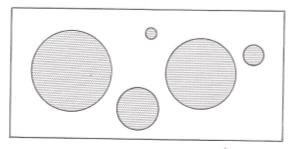
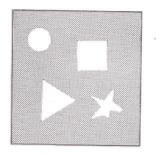
Shape of the figure element: This presents us with some relativity. Three general factors influence the specific cases. To begin with, some forms, like the circle, are easier to see than others. This probably accounts for the strength of simple geometric shapes. On The other hand, good shapes, which are also dynamic in line and position have a more powerful attraction than static shapes. Finally, shapes always involve some association or recognition value.


